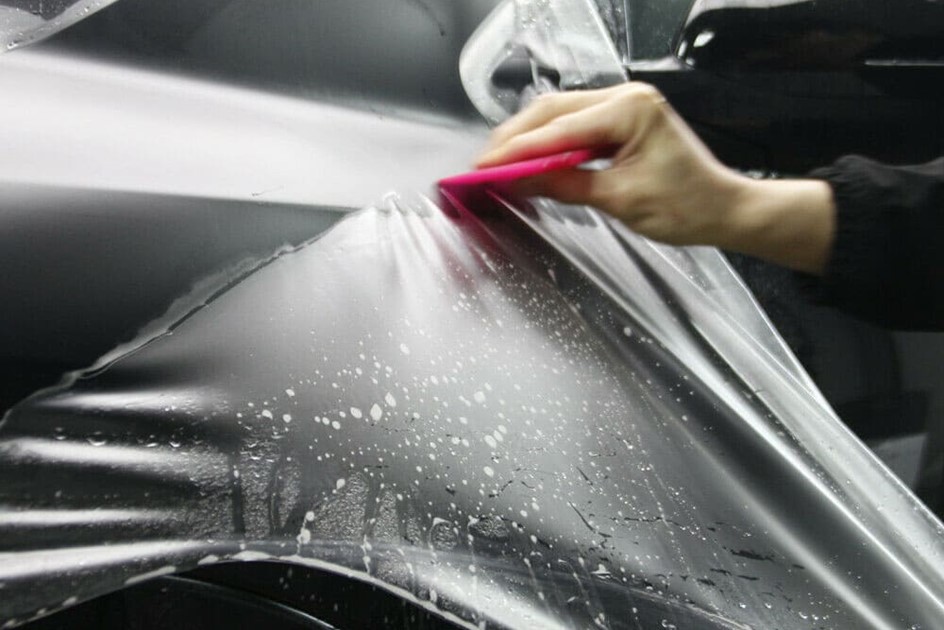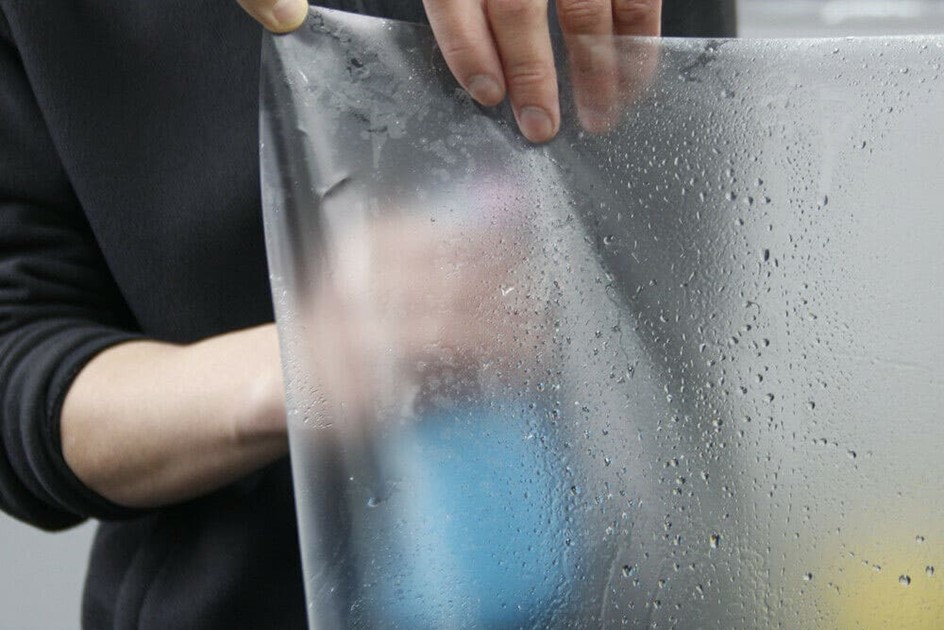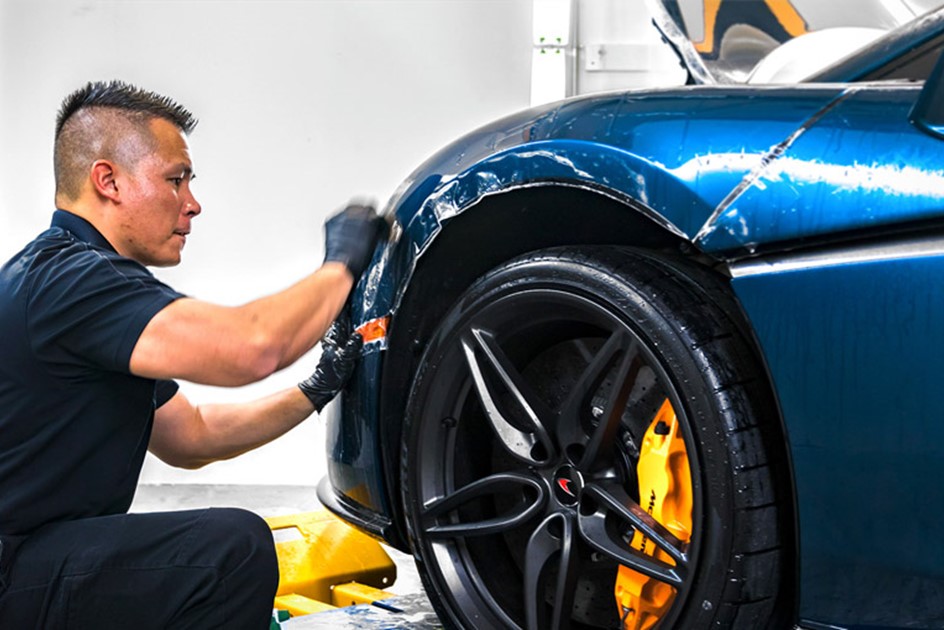What is paint protection film (PPF) and why is it a must-have for supercar investors?

A key element of supercar investment is ensuring that your appreciating automotive asset remains in immaculate condition, preserving its potential future value at auction. Anyone who has driven a sports, classic or supercar in anger will know that’s easier said than done. Stone chips and scrapes are a cruel inevitability. Just ask PaddlUp Co-Founder Joe Priday about his thoughts on PPF and the advantages it brings to automotive investment.
One such solution is PPF or paint protection film which, in recent years has grown in popularity as the process has been refined and become more and more accessible, but there’s a lot more to this invisible layer of plastic than meets the eye.
What is it?
PPF is a thick layer of urethane or polyurethane film and, owing to its transparent appearance and flexible yet durable qualities, it has become the go-to when it comes to protecting the delicate paintwork of a Ferrari, Aston Martin or any other high-performance car.
Originating in the Vietnam war to protect helicopter rotor blades that were prone to damage and breakages, PPF was quickly picked up in global motorsport paddocks in the eighties and, as is often the case, road cars followed suit a few decades later. Early iterations were known to discolour over time, this gave PPF an unenviable reputation in its early days but it has undergone a resurgence in recent times.
How does it work?
PPF can vary from manufacturer to manufacturer, but nowadays they are largely similar in composition, comprising several different layers, each with its own important contribution to the overall outcome.
A peel-away base liner rests at the bottom of the pile, protecting the other layers from dirt before application. Once the liner has been removed, a layer of acrylic adhesive which bonds the PPF to the clear coat is exposed. The car's original paintwork is always the priority and so the adhesive has been developed to remain attached to the film in its entirety, removing any fears of harmful residue.
Then comes the star of the show; the urethane layer. This hero film absorbs the energy from impacting rocks or debris from the road and disperses it across a wider surface area than regular paintwork would otherwise. A final top coat provides a seal for the urethane and a much-needed barrier from more microscopic intruders such as UV, oxidation, and airborne pollutants.
Now, this is where things get really interesting. Believe it or not, PPF is self-healing. The materials used are part of a group known as thermoplastic polymers which means it returns to its original shape when heated, so a sunny summer day – or a heat gun if you’re particularly concerned – will encourage the PPF to become smooth again and any dents or marks to disappear, as if by magic.

Is it worth it?
PPF is a specialist product that requires a trained professional (such as XPEL, Suntek or 3M) for apt application. As a result, prices are considerable. For those with smaller budgets or cars that won’t feel as much financial impact from the literal ones, you can opt to protect just the front-facing sections of your car (the ones that are likely to take the brunt of stone chips etc).
When it comes to rare and more collectable cars, the costs are well worth considering. Somewhere in the region of 5,000 GBP may seem like a lot, but if the same model can command higher premiums at auction in exceptional condition, then the resulting ROI (return on investment) when it comes time to sell may prove lucrative.
Advantages and disadvantages
The protection PPF provides against most scratches, dents, bugs and tree sap among other things is the obvious benefit. The longevity it brings (around five years) only compounds this further. Other than expenditure, there are no noteworthy deterrents. A car with PPF installed will not automatically increase the offers you receive, but an example in spotless condition will certainly attract more interest from prospective buyers than one with chips and scratches across the bodywork.

Learn more about supercar investing.

